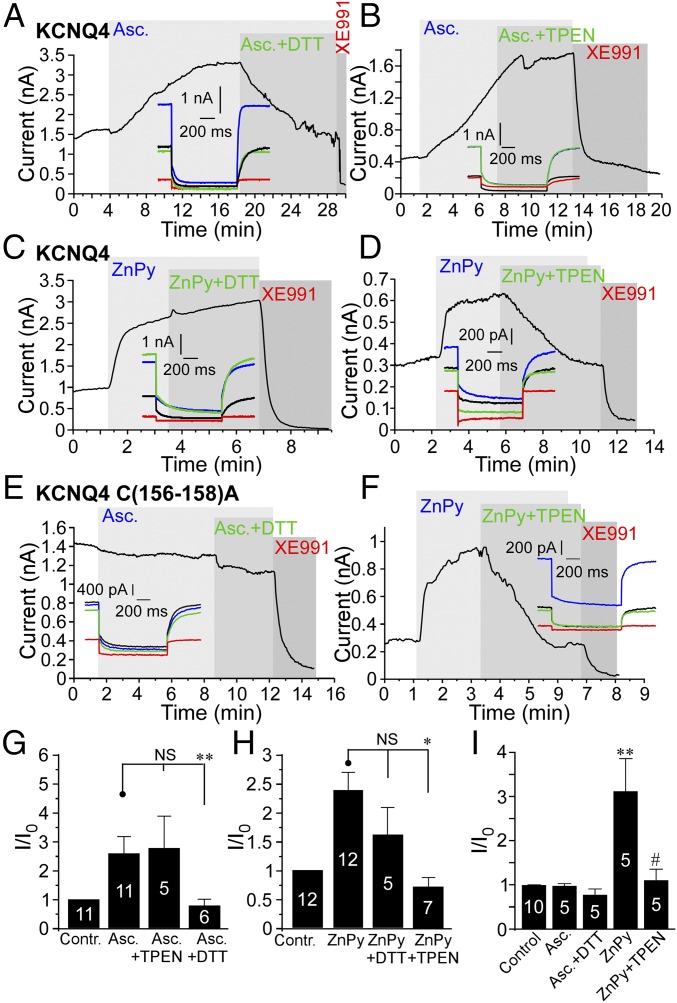Fig. 4.
The mechanism of KCNQ channel potentiation by zinc is distinct from the redox-dependent modulation. (A and B) Perforated patch-clamp recordings from KCNQ4-transfected CHO cells. The augmentation of KCNQ4 current by ascorbate (Asc.) (2 mM) was reversed by the reducing agent DTT (2 mM) (A) but not by 20 μM TPEN (B). Examples of current traces are shown in the Insets. (C and D) As in A and B but with ZnPy (10 μM) applied instead of ascorbate. In this case the KCNQ4 augmentation was reversed by TPEN but not by DTT. (E and F) The effect of ascorbate (E) but not of ZnPy (F) is abolished in KCNQ4 channels with C-to-A substitutions at positions 156, 157, and 158. (G–I) Summaries of the ascorbate (G) and ZnPy (H) experiments on WT KCNQ4 and the experiments on the KCNQ4 C(156–158)A (I). The number of recordings is indicated within the bars. Asterisks in G and H denote a significant difference from the group indicated by the line connector; *P < 0.05 and **P < 0.01 (paired t test). Symbols in I indicate a significant difference from control (**P < 0.001; paired t test) or from current amplitude in the presence of ZnPy (#P < 0.05; paired t test).

